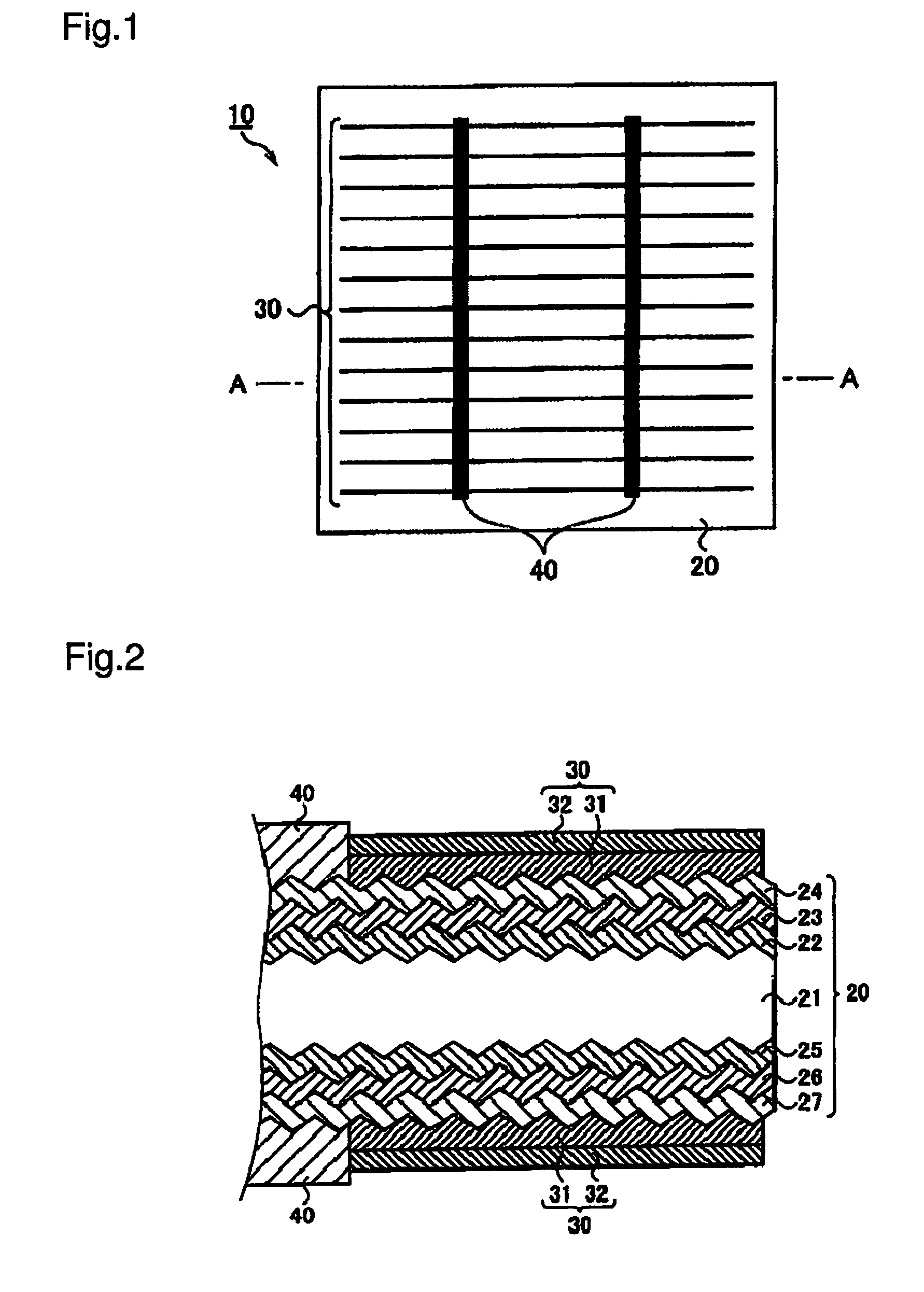Solar cell and manufacturing method thereof
a technology of solar cells and manufacturing methods, applied in printing presses, semiconductor devices, printing, etc., can solve the problem of more likely problems, achieve the effect of reducing the amount of conductive materials pushed, reducing the risk of problems, and increasing the printing speed
- Summary
- Abstract
- Description
- Claims
- Application Information
AI Technical Summary
Benefits of technology
Problems solved by technology
Method used
Image
Examples
examples
[0055]What follows is a specific description of various examples of the solar cell according to the invention, but the examples given below are not the only ones of the invention. The invention can be carried out in various appropriately modified forms as long as the gist of the invention is kept intact.
(Fabrication of Solar Cells)
[0056]Solar cells of Comparative Examples and Examples of the invention are fabricated in the following way.
[0057]To begin with, an anisotropic etching process is performed on n type monocrystalline silicon wafers each 104 millimeters square, so that a plurality of bumps (texture) are formed on the surface of the n type monocrystalline silicon wafers.
[0058]Subsequently, on a first main surface of each n type monocrystalline silicon wafer, an i type amorphous silicon layer of an approximately 10-nm thickness and a p type amorphous silicon layer of an approximately 10-nm thickness are formed consecutively one upon the other by the plasma CVD method. Then, on...
PUM
 Login to View More
Login to View More Abstract
Description
Claims
Application Information
 Login to View More
Login to View More - R&D
- Intellectual Property
- Life Sciences
- Materials
- Tech Scout
- Unparalleled Data Quality
- Higher Quality Content
- 60% Fewer Hallucinations
Browse by: Latest US Patents, China's latest patents, Technical Efficacy Thesaurus, Application Domain, Technology Topic, Popular Technical Reports.
© 2025 PatSnap. All rights reserved.Legal|Privacy policy|Modern Slavery Act Transparency Statement|Sitemap|About US| Contact US: help@patsnap.com



